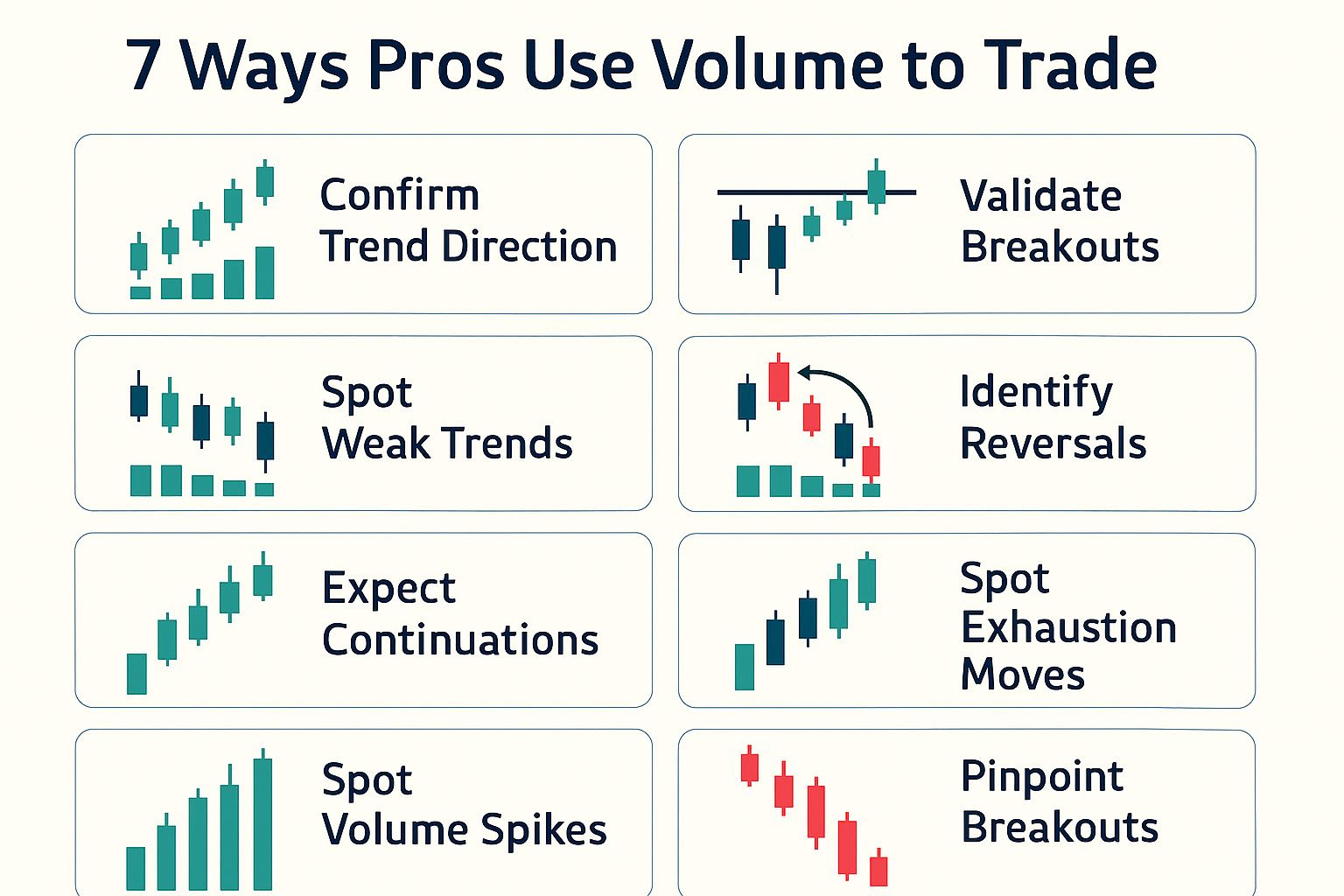Novo Nordisk, Eli Lilly fall after Trump comments on weight loss drug pricing
While retail traders focus primarily on price action, experienced traders understand that volume provides critical insights into market strength, participant behavior, and the likelihood of sustained moves. This guide breaks down exactly how professionals use volume analysis to gain a significant edge in their trading decisions.
1. Using Volume to Confirm Price Movements
Professional traders never trust a breakout without volume confirmation. When price breaks through significant levels - support, resistance, or trend lines - the accompanying volume tells you whether the move has conviction behind it.
A breakout on below-average volume suggests weak participation and increases the probability of failure. However, when a breakout occurs with a notable volume spike, it indicates strong market participation and significantly improves the odds of follow-through. This principle applies to both bullish and bearish breakouts across all timeframes.
2. Identifying Accumulation and Distribution Patterns
Volume patterns reveal institutional activity that would otherwise remain hidden. Large institutions must execute their trades carefully to minimize market impact, creating recognizable volume signatures.
During accumulation phases, institutions gradually build positions, creating steady price action within defined ranges accompanied by slowly increasing volume. Distribution occurs when these same institutions unload positions, typically showing declining prices with elevated volume as selling pressure intensifies.
Learning to recognize these patterns allows you to align your trades with institutional money flow rather than fighting against it.
3. Volume Profile for Strategic Level Identification
Volume Profile analysis identifies the price levels where the most significant trading activity has occurred. These high-volume nodes frequently become important support and resistance levels because they represent areas of maximum market interest.
The Point of Control (POC) - the price level with the highest traded volume - acts as a gravitational center for price action. Professional traders use these levels to plan entries, exits, and stop-loss placement, knowing these areas represent significant market memory and participant interest.
4. Recognizing Price-Volume Divergences
Volume divergence analysis provides early warning signals for potential trend changes. When price moves in one direction while volume moves in the opposite direction, it indicates weakening conviction in the current trend.
For example, if price makes new highs while volume decreases, fewer participants are supporting the upward move, suggesting potential exhaustion. This technique becomes particularly powerful when combined with momentum indicators like RSI or MACD for additional confirmation of trend weakness.
5. Analyzing Volume During Breakouts and Retracements
Volume behavior during retracements helps distinguish between healthy pullbacks and trend failures. After a breakout, professional traders monitor volume during any subsequent pullback to the breakout level.
Low volume during the retracement indicates minimal selling pressure and supports the continuation of the original trend. When volume increases on the bounce from the retest level, it confirms renewed buying interest and validates the breakout’s legitimacy.
6. Advanced Order Flow and Volume Delta Analysis
Sophisticated traders use order flow tools to examine real-time buying and selling pressure at the tick level. Volume delta - the difference between uptick and downtick volume - reveals whether recent price action was driven by aggressive buyers or sellers.
Positive volume delta indicates buyers were willing to pay higher prices to execute their orders, suggesting bullish pressure. Negative volume delta shows sellers accepting lower prices, indicating bearish sentiment. This granular analysis provides immediate insights into market participant behavior.
7. Volume in Market Cycle Context
Understanding volume within broader market cycles enhances timing and risk management. During accumulation phases, volume typically remains subdued but gradually increases as the market transitions into trending phases.
Climactic volume events - such as capitulation selling at bottoms or euphoric buying at tops - often signal cycle transitions. These extreme volume spikes frequently coincide with significant turning points, providing valuable timing information for position adjustments.
Implementation Strategy: Volume analysis is most effective when integrated into a comprehensive trading approach rather than used in isolation. Focus on developing a systematic process for evaluating volume in relation to price action, market structure, and your specific trading timeframe.
Start by identifying the volume patterns most relevant to your trading style, then practice recognizing these setups in real market conditions. Remember that volume interpretation can vary across different markets and instruments, so adapt your analysis accordingly.
Mastering volume analysis provides a significant advantage by revealing market participant behavior that price action alone cannot show, making it an essential skill for serious traders.
